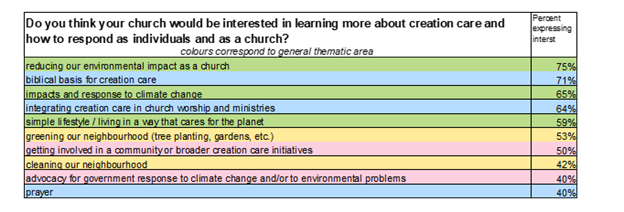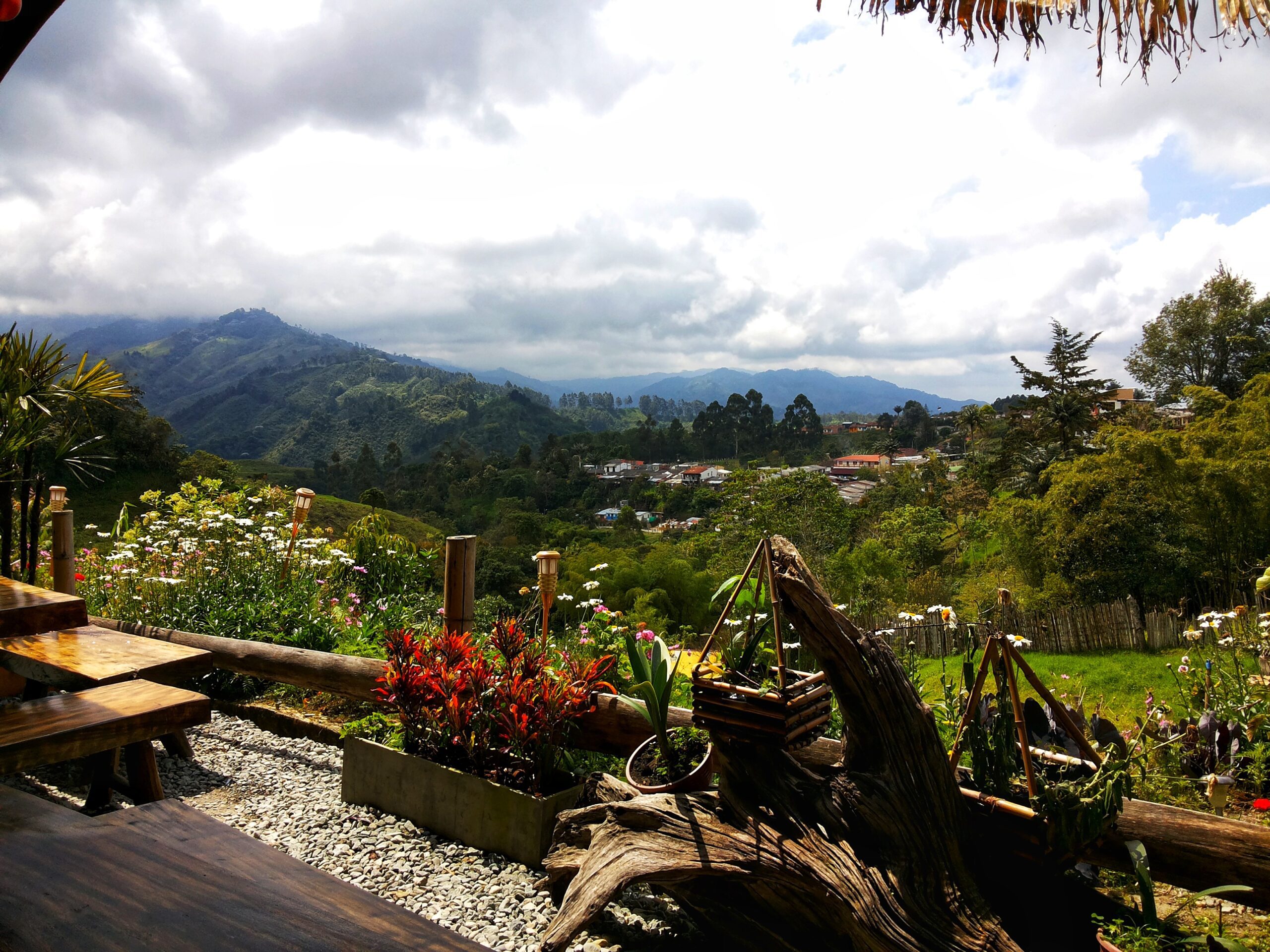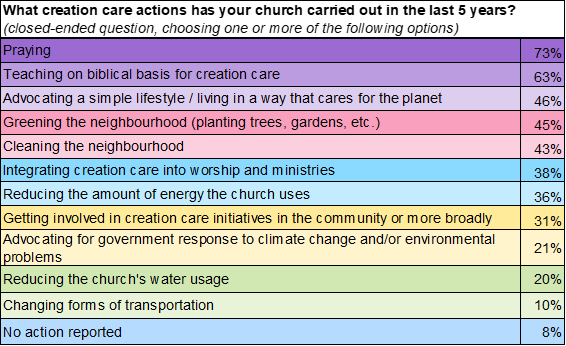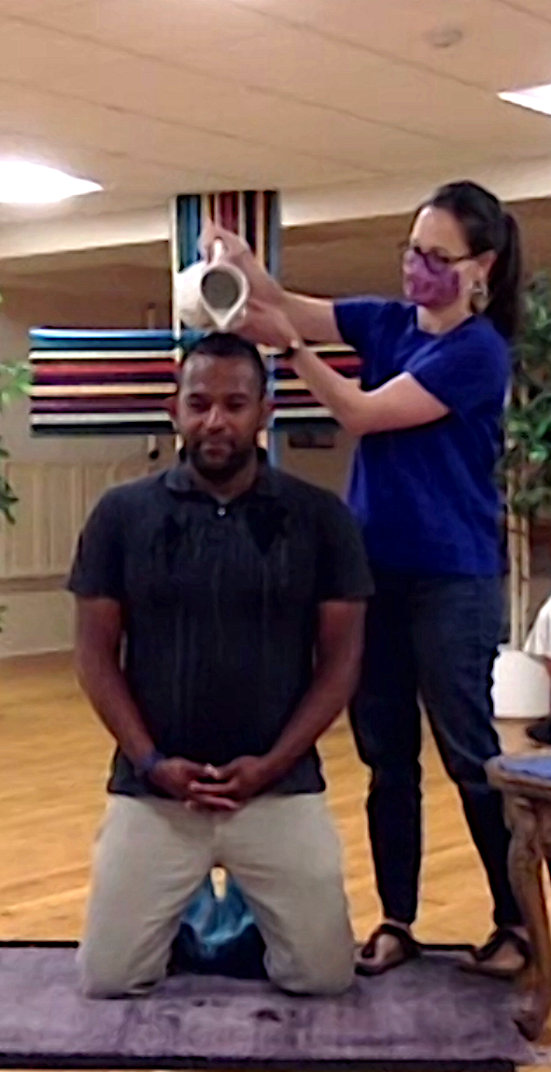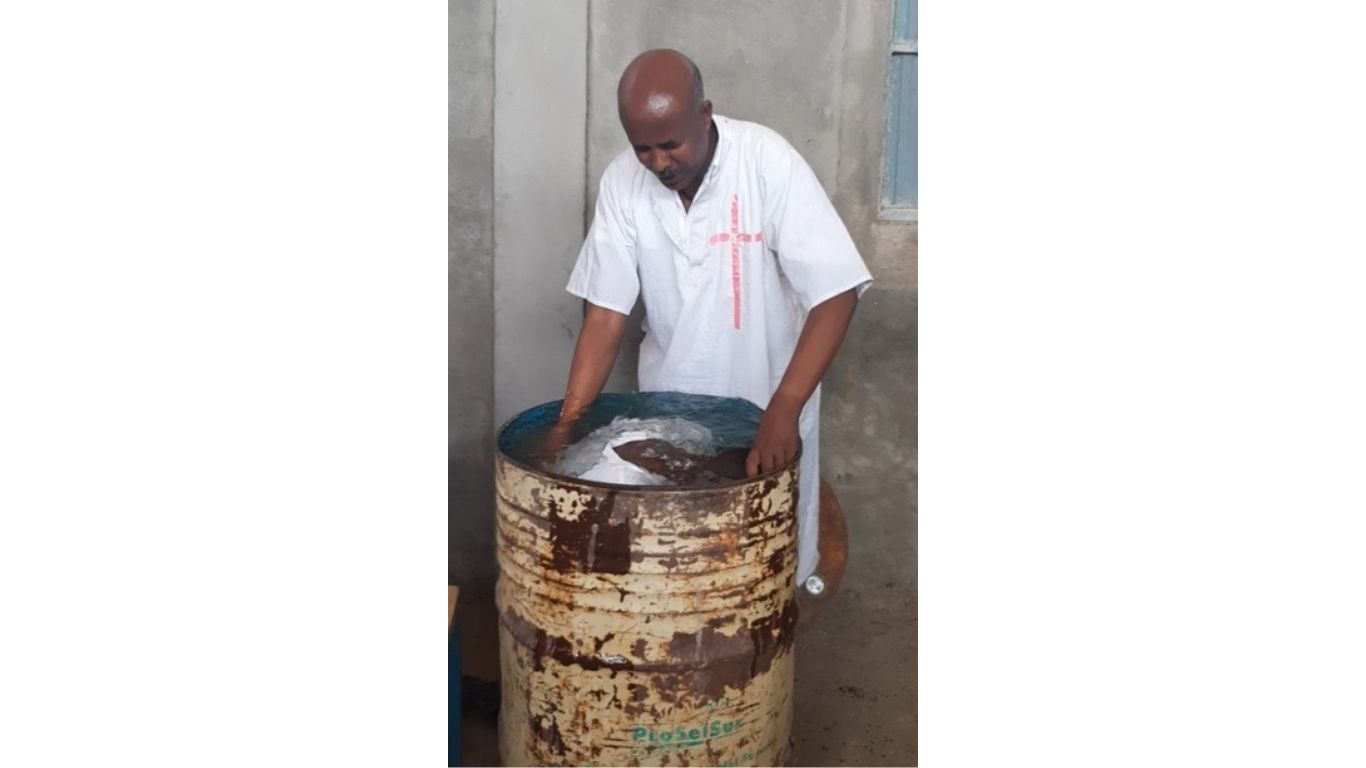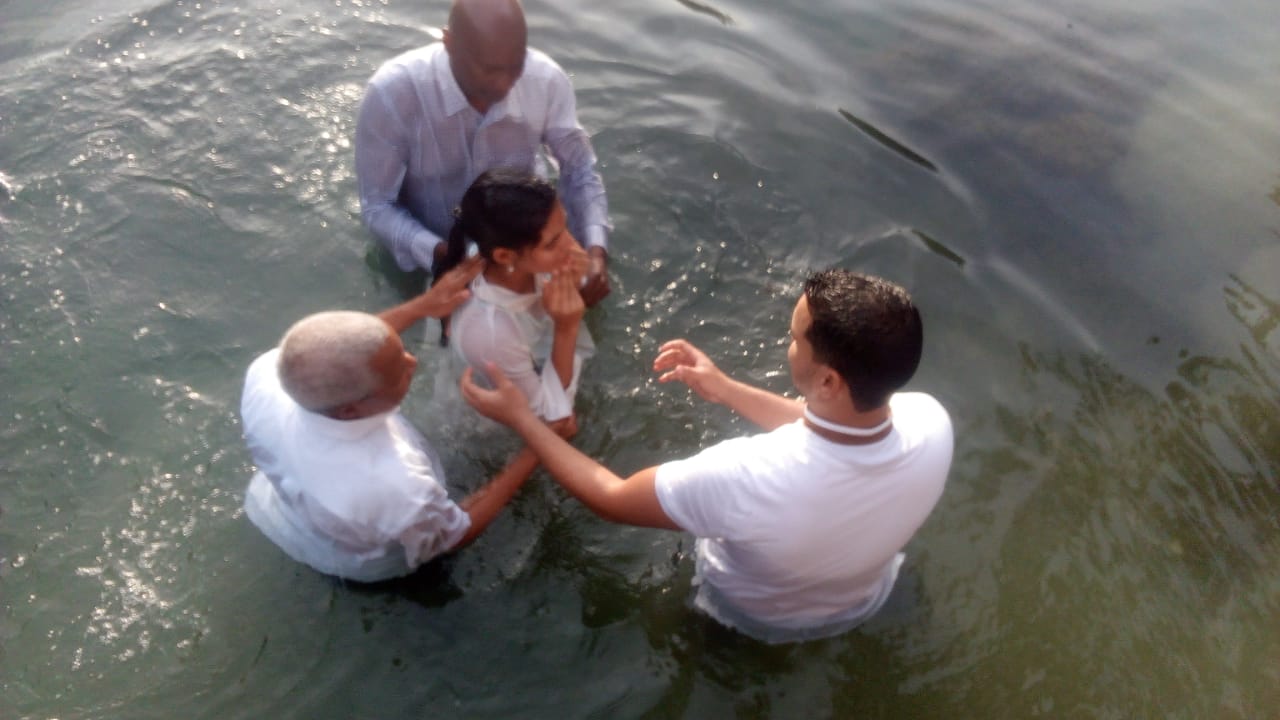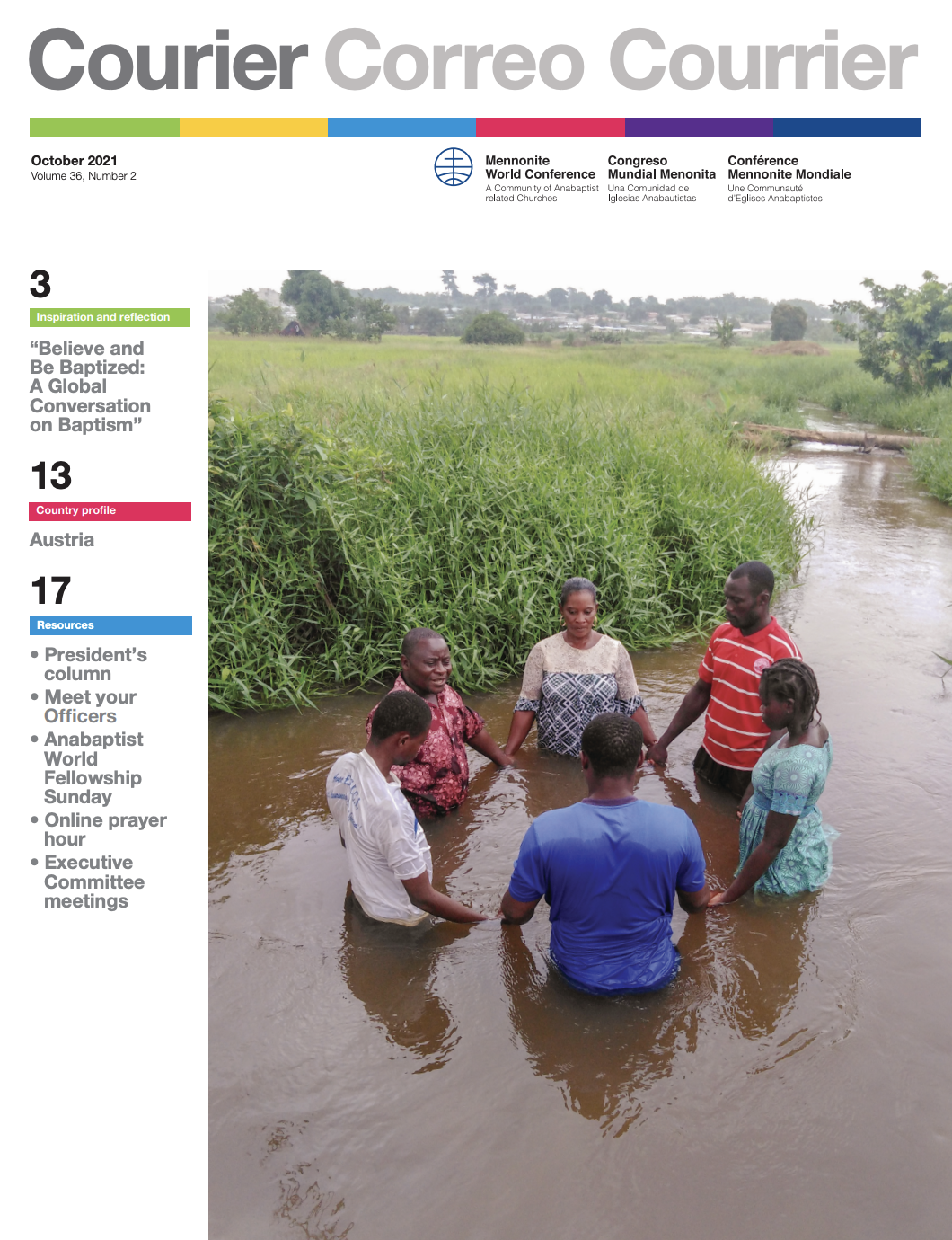-
Anabaptists around the world care for creation
Stories from around the world teach how we respond as faith communities to the challenges of climate change. The 353 responses to the Creation Care Task Force survey contained many stories of churches caring for creation. This month, we highlight responses that emphasize how congregations creatively enact local solutions as faithful response to the injustices…
-
Meet your MWC Officers
The Executive Committee delegates responsibility to the officers to provide oversight to the life and work of MWC between its annual meetings. president and vice-president elected by the General Council, the general secretary (ex officio) appointed by the General Council a treasurer appointed by the Executive Committee An officer must be a member of an…
-
What would help churches engage more with creation care?
Last month we looked at what activities churches actually do with creation care. This week we look at what they would like to learn more about. In other words, what do churches wish they could do more? 1. Respondents are interested in learning about several key areas of creation care. Respondents believe their churches are…
-
Created in the beauty of climate
On 23 September 2021, UN Secretary-General António Guterres said that the Intergovernmental Panel report on climate change was “a code red for humanity.” And yet Guterres was hopeful, saying “it is not too late to act to ensure that climate action contributes to international peace and security.” For Guterres, nations must work together because peace…
-
To overcome obstacles in unanimity
Austria Mennonitischen Freikirche Österreich (MFÖ) / Mennonite Free Church of Austria The Mennonite Free Church in Vienna is the community in which I had the privilege of growing up. We are a small but incredibly family-oriented church, centred around Jesus Christ, the Son of God. I can identify myself very well with the Mennonites because…
-
How do churches practice creation care?
Our previous stories from the global survey shows that 1) Mennonite-Anabaptist congregations around the world are being impacted by environmental issues such as climate change in diverse ways, 2) are feeling anxious and sad due to those impacts, and 3) are talking some about creation care in their churches. But how exactly are churches feeling…
-
Dialogue: “Through the Word”
“For those who do not want to believe, no argument is valid, and for those who want to believe, arguments are not necessary.” I shared that phrase (from an unknown author) with a friend in Ontario a few days ago. We talked about how difficult it is to see someone change their position on any…
-
Are our churches and leaders engaged with creation care?
“In Germany environmental care has been on the public agenda already for a very long time, making it a part of our church’s collective conscience for a while. We are trying different ways to make good on the belief that we are to be God’s stewards of creation.” —Dora Schmidt, Mennonitengemeinde Enkenbach Germany What is the…
-
Giving and Receiving within the Body of Christ
Following a 5-year conversation with theologians from the Roman Catholic and Lutheran traditions, the Faith and Life Committee invited the members of Mennonite World Conference to consider our practices of Anabaptist together at Renewal 2027 in two webinars entitled “Believe and Be Baptized: A Global Conversation on Baptism.” The second webinar examined the report: Baptism…
-
Baptism in a barrel
It is very difficult to go to the northern part of Ethiopia after the war broke out. Despite the security concerns, when I heard that members of our church in western Tigray were in difficult conditions, I organized a team. We would go there to show our love for MKC members in the area. The…
-
“Believe and Be Baptized: A Global Conversation on Baptism”
Following a 5-year conversation with theologians from the Roman Catholic and Lutheran traditions, the Faith and Life Committee invited the members of Mennonite World Conference to consider our practices of Anabaptist together at Renewal 2027 in two webinars entitled “Believe and Be Baptized: A Global Conversation on Baptism.” Biblical, theological, and historical context of believers…
-
Courier 2021 / 2 October
Feature MWC leaders Assembly Update Country profile Resources


